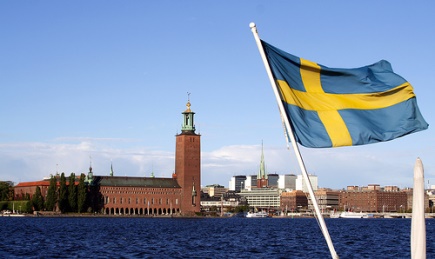”Sweden needs more international students”

Higher education is becoming all the more important as a competitive factor in today’s globalized society. Many countries are investing in and expanding their education systems and there is a clear increase in the number of students getting their education abroad. The total number of students studying abroad worldwide is around three million. These people are an important part of resource for competency in the future.
An increase in internationalization demands understanding and respect for different cultures, and international students contribute to domestic students’ knowledge. Swedish students gain cultural influences while at the same time international students are introduced to Swedish culture. This is significant for those who end up working in Swedish companies abroad.
These international students are important for Sweden. Swedish companies are largely international and need to attract new talent. International students who return home or move to another country are important ambassadors for Sweden and for Swedish companies operating in these countries. They are important for trade contacts in general, but even for Sweden’s possibility of contributing to sustainable development in emerging regions.
Sweden has lost 80 percent of students from outside of the EU since the government introduced tuition fees, down from over 8,000 to 1,600. The proportion of students in Sweden from outside of Europe is less than two percent, far lower than the EU average of five percent. At the same time, the number of foreign students getting work permits in Sweden is decreasing. When asked, 85 percent of students said they would choose to stay in Sweden. In reality, 17 percent stay, and that number is dropping.
A new report from Boston Consulting Group shows that students decide which country to study in based on rankings, access to exclusive programmes, and the cost of education. It also shows that, of the students who are offered a place in Sweden, only 20 percent accept if there is no scholarship. If there is a scholarship, 70 percent accept.
Meanwhile, students from outside of the EU choose to head to other countries where the costs are equally high or even higher than in Sweden. This is despite the fact that Sweden, according to an survey among alumni, can compete with high quality education, unique education, and high quality of life.
There are two reasons for this: These countries have well-formed tuition fee grants for paying students, an area in which Sweden’s efforts are very modest. In many other countries, students are offered good possibilities of a job after graduation. In Germany and the Netherlands, for example, students are allowed residency for six to 12 months after they complete their degree. To be able to stay in Sweden, students must find a job before they graduate.
As representatives for trade and higher education, we believe that the decreasing number of non-European students gives the wrong picture of Sweden as an international player. We have to do something, now. The fact that the government has promised a further 100 million kronor ($15.5 million) for scholarships aimed at aid-recipient countries is of course positive. But Sweden also needs to be able to compete for students from other countries. For more of them to come, more scholarships are needed. To attract them and to keep them here, there needs to be reformed visa laws and a clear objective from both a university and industry level.
We’re proposing a new scholarship model that is both socio-economically justified and cost-neutral for the state. The model is to be founded on three principles:
– The scholarships should be funded by income tax revenue from non-EU students who stay on in Sweden to work after graduation. To achieve cost neutrality, Sweden needs to offer 1,500 students scholarship, of whom 20 percent must stay on for at least five years.
– The distribution of the scholarship funds needs to be decentralized. The state should allocate a certain scholarship sum to universities and university colleges, which then in turn allocate it to the prospective students.
– The funds should be allocated to universities based on an incentive model that is partly based on attractiveness (the number of students that pay the fees) and partly on the ability to foster the study-work transition (the number of students who get specialized work permits after their exams).
With an increase in scholarship funding and better opportunities for students to stay after their exams – but with revised rules for residency after the exams which gives the possibility of staying and seeking a job – Sweden’s chances of being a competitive player in the global arena will increase too, both in education and industry. But to attract students from around the world it must be clear that Sweden is an attractive country in which to be educated. That requires industry, academia, and the government to take a joint responsibility.
We are ready. Is the government?
Carl Bennet, CEO of Carl Bennet AB Börje Ekholm, CEO of Investor
Leif Johansson, board member at Astra Zeneca and Ericsson
Martin Lundstedt, CEO of Scania Olof Persson, CEO of AB Volvo
Pam Fredman, chairwoman of Sveriges universitets- och högskoleförbund and head of Gothenburg University
Peter Gudmundson, head of Kungliga tekniska högskolan (KTH)
Originally published in Swedish in the Dagens Nyheter newspaper. Translation by The Local
Meest Gelezen
Vrouwen houden universiteit draaiende, maar krijgen daarvoor geen waardering
Hbo-docent wil wel rolmodel zijn, maar niet eigen moreel kompas opdringen
Wederom intimidatie van journalisten door universiteit, nu in Delft
‘Waarom het nu niet lukt om medezeggenschap in hbo te versterken’
‘Sluijsmans et al. slaan de plank volledig mis’

